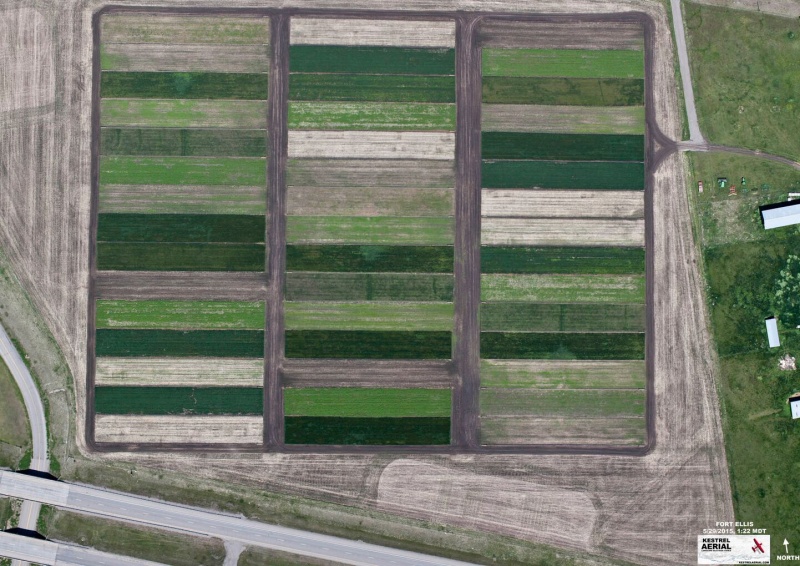Cropping Systems
|
|
|
|
|
Aerial view of MSU Fort Ellis cropping systems study 2015, 2016 and 2017. Note the crop rotation from year to year.
|
||
The Cropping Systems team works to provide relevant resources and decision tools to support individuals seeking information about cropping systems and variety selection considerations for a changing and variable climate. |
||
It's tough to predict plant growth based on the calendar because temperatures can vary greatly from year to year. Instead, growing degree days, which are based on actual temperatures, are a simple and accurate way to predict when a certain plant stage will occur.
The Western Region Climate Center (WRCC) provides this map of Cooperative Observer Program (COOP) stations that shows climate summaries and histocial GDD (growing degree days) calculations by month for many locations in Montana. GDD is a way to quantify heat accumulation for plant growth. The calculation isjust the daily average temperature minus a base temperature, summed up over time.
The MSU Southern Agricultural Research Center (SARC) provides daily weather summaries and trends for select locations in Montana which can be used to schedule crop irrigation or compute growing degree days.



